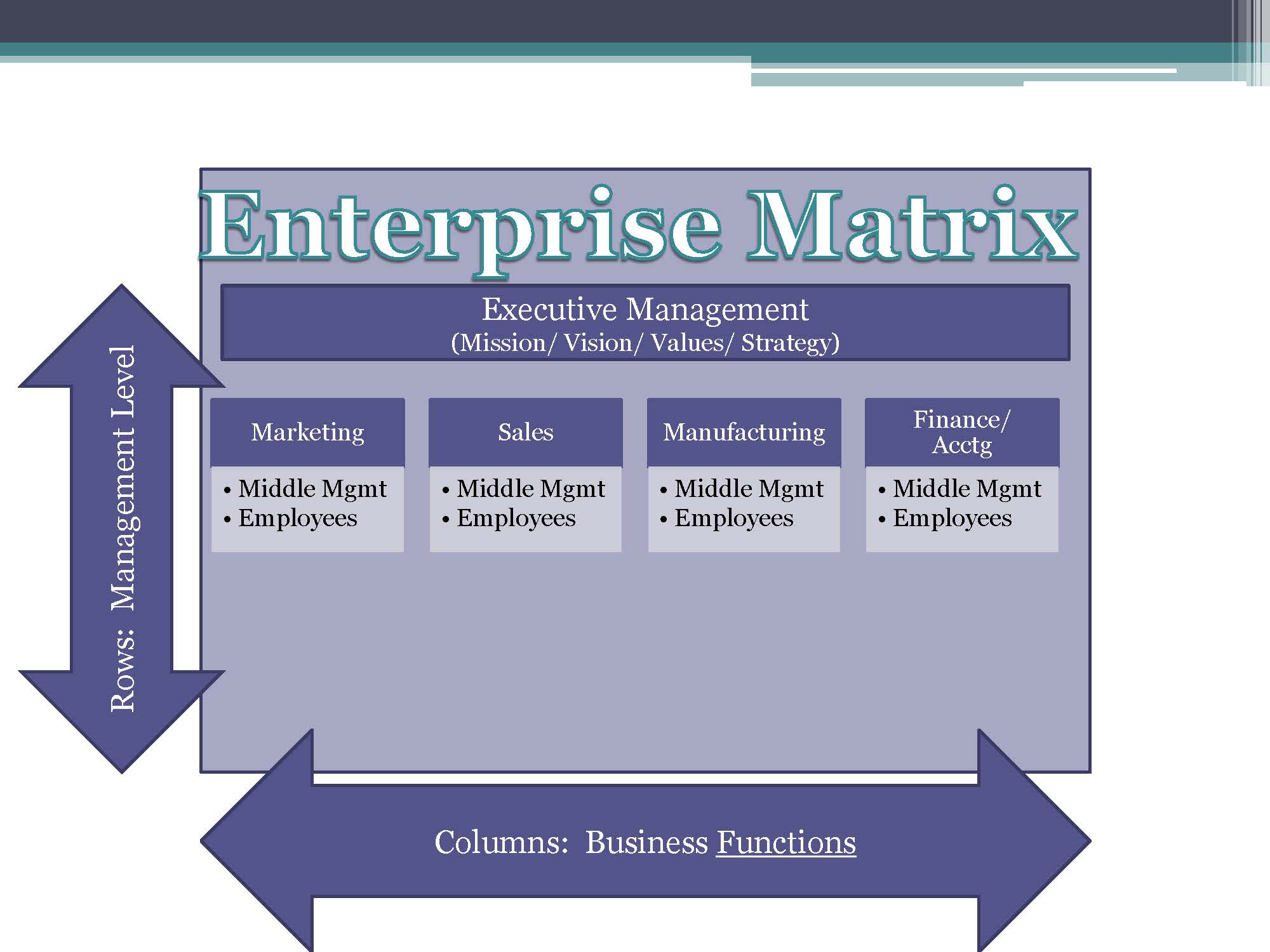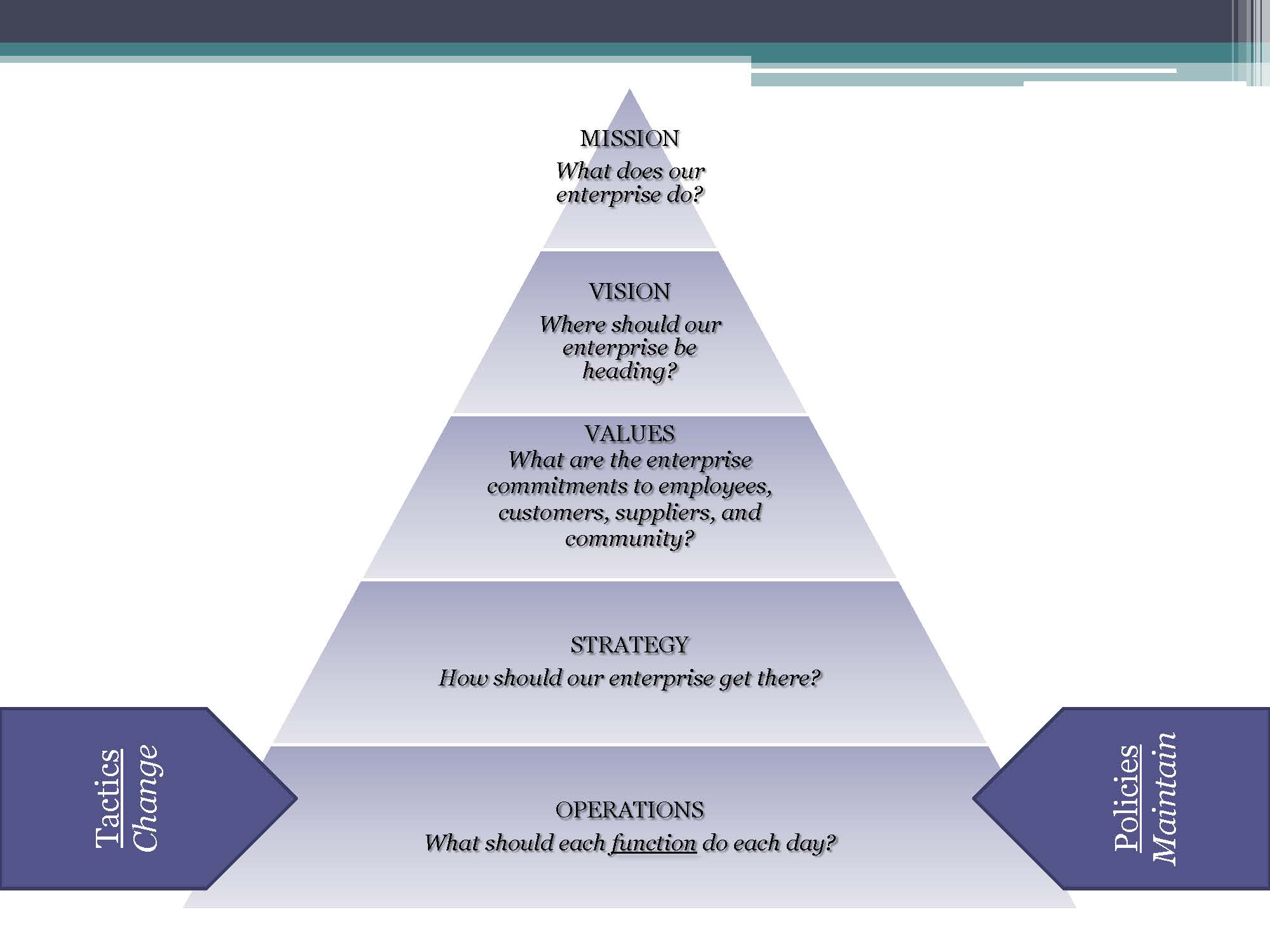Discussions of strategy in business are probably less than 100 years old, getting a big spike from research published around 1980 from Miles and Snow, or Porter, for example. Strategy in military history, however, is much older, and usually includes the influence from military strategy authors such as Sun Tzu and von Clauswitz.
On of the key thoughts in business strategy is that deciding what your organization (or “enterprise”) does, depends in part on what your competition is doing. For example, in the late 1920’s the application of strategy concepts helped Alfred Sloan and GM surpass Ford in car sales.
Below are some images that I use in the classroom to introduce enterprise foundations and the application of strategic concepts to influence decisions, such as Information Security practices. Note that the enterprise can have more or different functions (every organization is a bit different, especially when it comes to housing the Information Systems group). Also note that the enterprise can be extended, as in supply chain studies, to include supplier and customer “functions.” The bottom line is that the day-to-day operations of each business function should be performed – and managed – under the guidance of overarching strategic thought.
I’m posting this partly out of a desire to distinguish what I perceive to be slight nuances between Mission, Vision, Values, and so on. Part of the ambiguity posted on the web sites I visited is probably due to common business neglect of these concepts. While this thinking may not be important to all businesses, I suspect it does make difficult appropriate solutions to fairly ordinary business problems. Perhaps this contributes to the relative fragility (Collins, Senge, Businessweek) of the average business enterprise?

